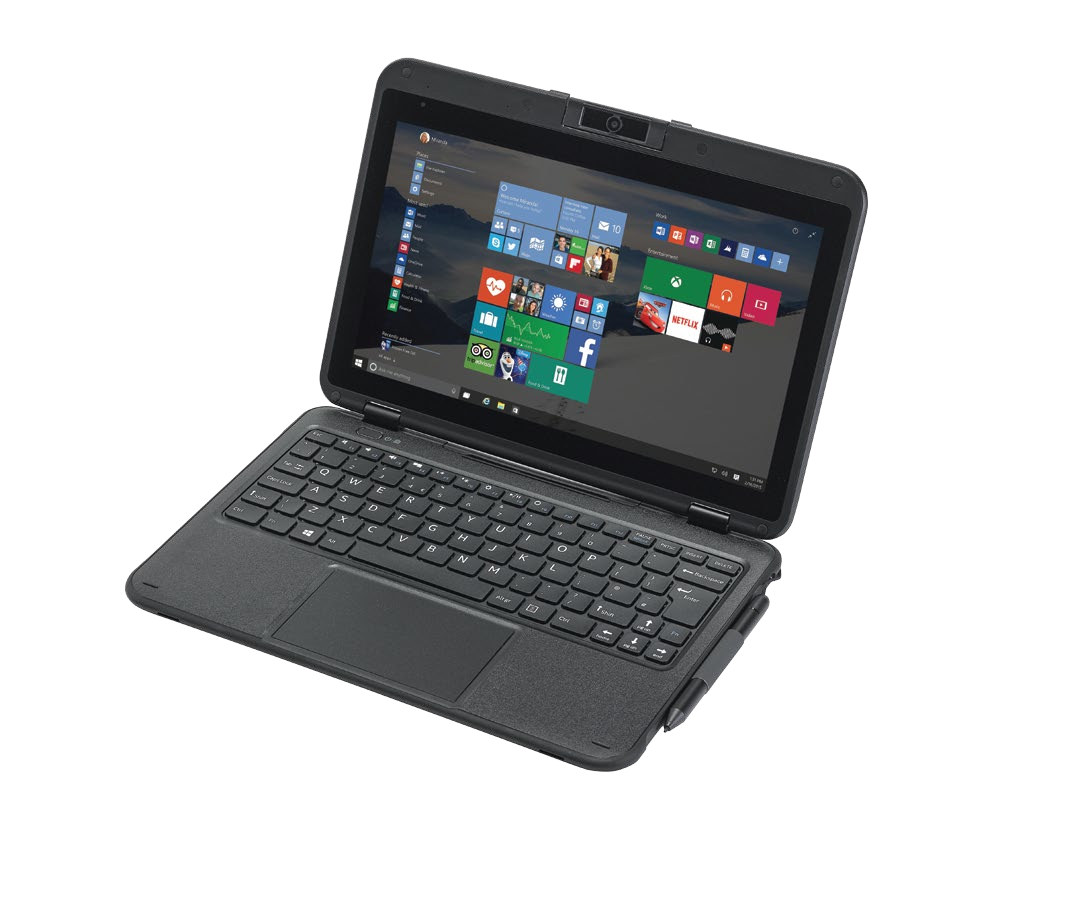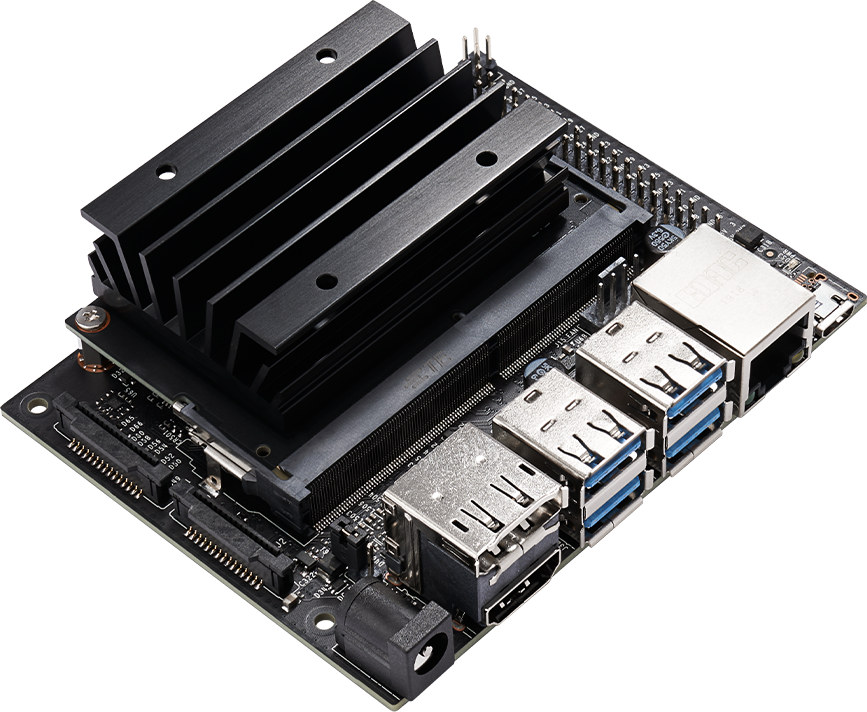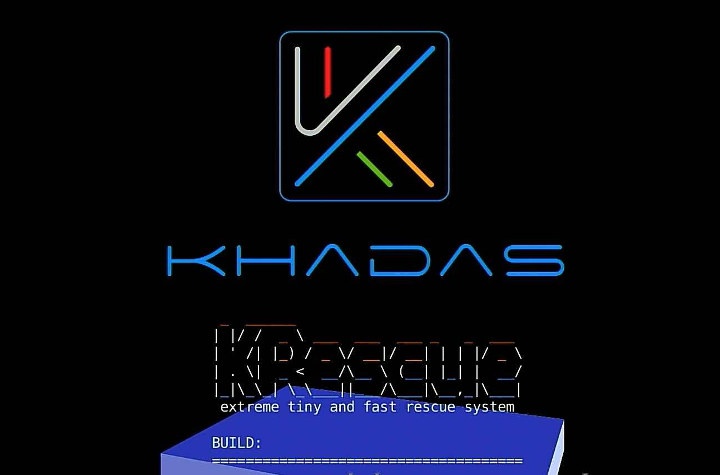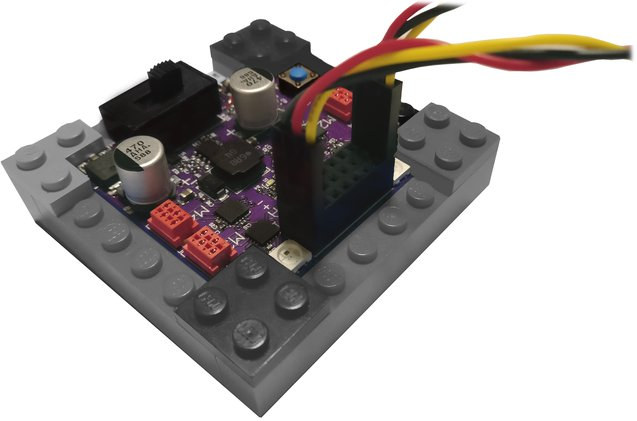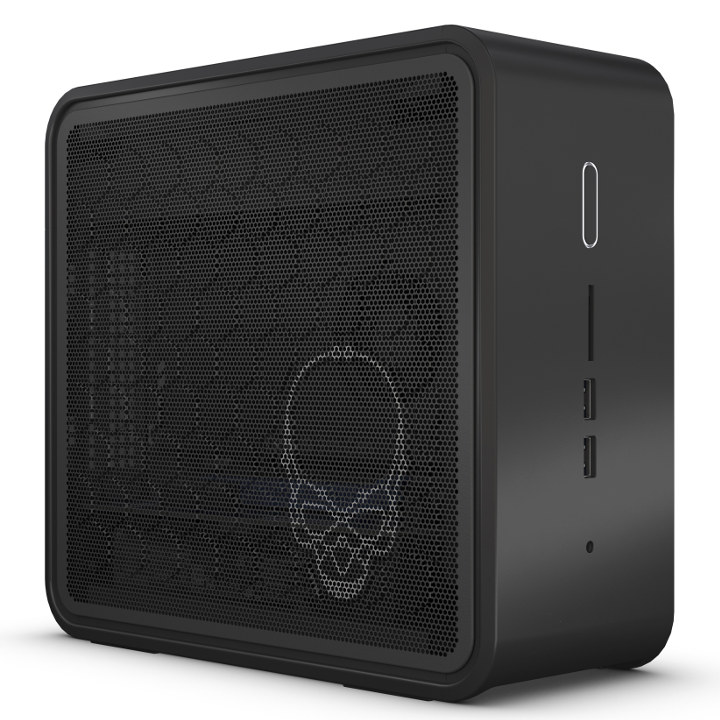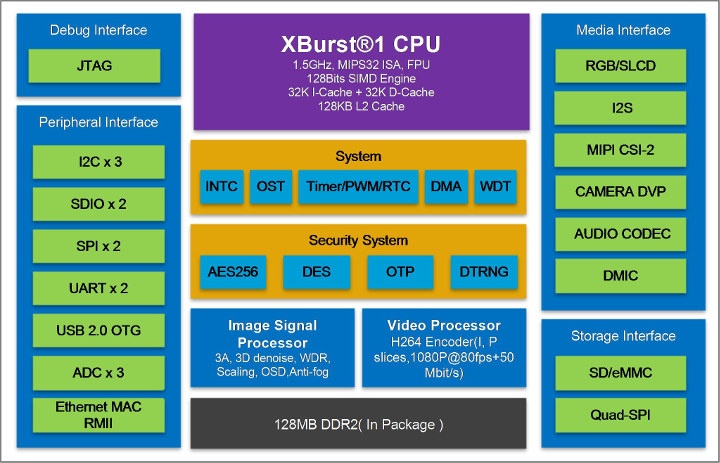Qualcomm Snapdragon Windows 10 mobile PCs/laptops offer long battery life and 4G LTE connectivity, but usually suffer from a disappointing performance/price ratio. That means you may have to spend fairly more than you may expect for a Windows 10 Arm laptop, and for instance, Microsoft Surface Pro X goes for $999 and up with a Snapdragon 8cx based Microsoft SQ1 processor. But much more affordable Arm laptop may not be that far off, as Microsoft published some news about their education solutions, and two new Snapdragon 7c laptops are in the works: JP.IK Turn T101 starting at $299 Positivo Wise N1212S starting at $575 Both laptops promise twice the battery life and 25 percent better performance than competing platforms, as well as (4G LTE) cellular connectivity. A $300 Arm laptop with decent performance looks promising, but so far we have very few details at this point, so I’ll speculate […]
NVIDIA Jetson Nano Developer Kit-B01 Gets an Extra Camera Connector
Launched in March 2019, NVIDIA Jetson Nano developer kit offered an AI development platform for an affordable $99. The kit is comprised of Jetson Nano module and a carrier board, and the version I received last November ended with “A02”. Jetson Nano developer kit is now getting updated with B01 carrier board that adds an extra MIPI CSI connector and other few changes, including compatibility with NVIDIA Jetson Nano production module (with eMMC flash instead of MicroSD card). Jetson Nano developer kit-B01 specifications: B01 Jetson Nano CPU Module 128-core Maxwell GPU Quad-core Arm A57 processor @ 1.43 GHz System Memory – 4GB 64-bit LPDDR4 @ 25.6 GB/s Storage – microSD card slot Video Encode – 4K @ 30 | 4x 1080p @ 30 | 9x 720p @ 30 (H.264/H.265) Video Decode – 4K @ 60 | 2x 4K @ 30 | 8x 1080p @ 30 | 18x 720p @ 30 […]
NanoPi R2S Dual Gigabit Ethernet SBC & Router is Powered by Rockchip RK3328 SoC
FriendlyElec launched NanoPi R1S router with two Ethernet ports based on either Allwinner H3 or H5 processor coupled with 512MB RAM last November. Both ports are “Gigabit” Ethernet port, but one is implemented via a USB 2.0 to Ethernet controller with a maximum bandwidth of around 330 Mbps. If you’d like to get two Gigabit Ethernet reaching close to 1 Gbps each, and your target application would benefit from a bit more memory, the company is now working on NanoPi R2S based on Rockchip RK3328 processor with 1GB DDR4 memory, one Ethernet port using the GMAC from the chip, and one Ethernet port relying one a USB 3.0 to Ethernet controller. The rest of NanoPi R2S specifications are pretty similar to the earlier board except WiFi is also gone: SoC – Rockchip RK3328 quad-core Cortex-A53 @ 1.5 GHz with Arm Mali-450MP2 System Memory – 1GB DDR4 RAM Storage – MicroSD […]
Krescue for Khadas VIM Boards Enables Backup/Restore of eMMC flash, Access to the Terminal, and More
Sometimes things go wrong, and you need a way to recover your system, either by restoring a backup or accessing your system to check it out and hopefully fix the issue. Krescue is a minimal firmware image (21MB compressed) for Khadas VIM boards designed to do just that, and more. Some of the highlights of Krescue firmware image include: Full eMMC flash dump/backup to Micro SD card, USB, or LAN host. Restore the compressed dump (.img.gz) into an eMMC on the same device or another device Rescue shell for expert users. Shell access via UART, USB network, and Web browser You’ll find Krescue for Khadas VIM1, VIM2, VIM3 and VIM3L on Khadas website which can be flashed to a MicroSD card using balenaEtcher. You can then insert the card into your board, and boot into maskROM mode to access the menu above, and control it with the IR remote control […]
Snekboard Controls LEGO Power Functions with CircuitPython or Snek Programming Languages (Crowdfunding)
LEGO has provided robotics kit for years, and LEGO blocks and accessories in general are great to build all sort of projects, so it’s not surprising third-parties have come up with LEGO-compatible boards and accessories for makers which include DFRobot BOSON kits, STEMTera smart breadboard, Brixo LEGO blocks with built-in electronics, and more. Snekboard is another option with the Microchip SAMD21 board designed to work with LEGO Power Functions motors and switches are programmable with MicroPyhon based CircuitPython or Snek programming languages. Snekboard hardware specifications: Microcontroller – Microchip SAMD21G18A Arm Cortex-M0 MCU with 256 KB flash and 32 KB RAM. Storage – 2MB SPI flash USB – 1x Micro USB port for power and programming Motor Control – 4x TI DRV8800 DC motor drivers tp provide up to 2.8A for LEGO motors and servos I/O- 8x GPIOs (3.3V) Misc – 2x RGB LEDs, 1x blue LED Power Supply 5V via […]
Introducing the Intel NUC 9 Compute Elements, Mini PC Kits, and 3rd-Party Ecosystem
Intel’s NUC mini PC range is familiar to anyone who has looked for a very small compact and functional PC. But they, and similarly sized mini PCs in general, have a notable limitation when compared to desktops and also many high-end laptops in that the graphics performance is somewhat restricted because it is typically provided by the processor’s integrated graphics. Whilst these integrated graphics are suitable for browsing, video playback, and the office style applications that the devices have been marketed towards, they are normally insufficient for gaming as only low framerates are obtainable. Intel initially tried to address this gaming shortfall through the introduction of the Intel Skull Canyon (NUC6i7KYK) NUC which came with a 6th-gen Skylake Core i7-6770HQ that included Iris Pro Graphics 580 and at the time with their 72 EUs (Executions Units) was Intel’s most powerful integrated GPU. Additionally, the Skull Canyon also featured a (USB-C) […]
Ingenic X1830 IoT Processor Features a 32-bit MIPS Core, 128MB DDR2 RAM
Ingenic is a silicon vendor based in Beijing, China and known for its MIPS Xburst processors such as JZ4780 dual-core SoC or T10 video processor. It’s been a while (a few years) since we last covered new processors from the company, but it appears the company launched another MIPS SoC for IoT applications last year. Meet Ingenic X1830 processor. X1830 specifications: CPU – MIPS32 XBurst-1 core @ up to 1.5 GHz with SIMD engine, 32KB instruction cache, 32KB data cache, 128KB unified L2 cache Memory – 128MB DDR2 in package Storage I/F – 2x SD/eMMC controllers, and Quad SPI (QSPI) VPU H264 Encoder up to 1080p80 or 1560×1600 resolution JPEG compressing/decompressing up to 70Mega-pixels per second ISP 12-bit RAW or up to 24-bit RGB Max input resolution 2688×2048 @20fps, 1080p @60fps,720p @120fps 2-D and 3-D noise reduction filter, advanced demosaic, color processing, lens shading, defog, glare, static/dynamic defect pixel… Image […]
MediaTek Rich IoT SDK v20.0 Released, Pumpkin i500 SBC Announced
MediaTek Rich IoT SDK v20.0 is Available MediaTek has announced its Rich IoT SDK v20.0 is already available for the i300 and i500 chipset series. The SDK was developed in collaboration with BayLibre, the French developer of Linux and Android embedded systems software, which is also known for helping mainlining Amlogic processors to Linux. The i300A, i300B, and i500 hardware platforms are supported and the features are focused on IoT and the emerging generation of smart devices. Supported OS’es and Test Applications The Rich IoT SDK v20.0 supports Yocto 3.0 Linux and Android 10 to let third-party customers and members of the MediaTek Ecosystem test Computer Vision algorithms, AI models and custom software on top of the base layer. Updates and Maintenance The SDK is receiving updates quarterly, with security updates and patches being delivered over-the-air (OTA) on a regular basis. The chipset series has a timeline for updates to […]


